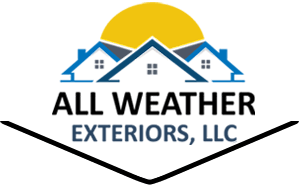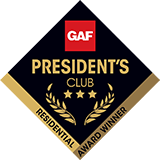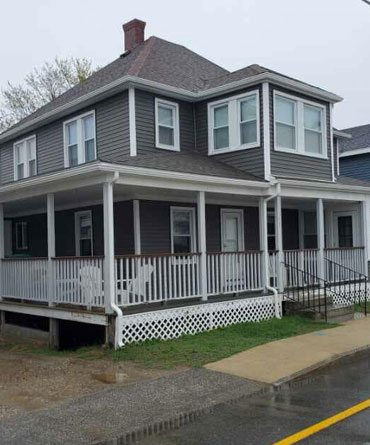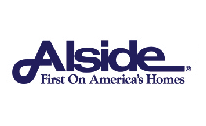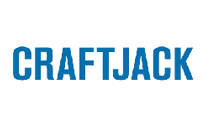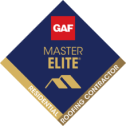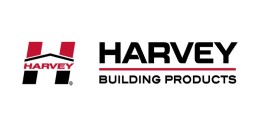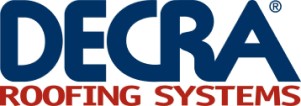In the world of commercial construction, the choice of roofing material is a crucial decision that impacts not only the aesthetics of the building but also its durability and longevity. This article aims to enlighten you about the benefits of metal roofing for commercial buildings, providing insight as to why this material is rapidly gaining popularity in commercial construction.
Metal roofing, a once mostly residential choice, has found its way into the commercial construction sector due to its myriad of advantages. As the name suggests, metal roofing involves the use of metal materials in the construction of the building’s roof. This type of roofing system is available in a variety of materials such as steel, aluminum, copper, and zinc alloys, each offering its unique set of benefits. As we delve deeper into the article, you will understand why metal roofing in Rowley is becoming an increasingly popular choice for commercial buildings.
Understanding Metal Roofing
In the domain of commercial construction, metal roofing is an increasingly popular choice owing to its numerous advantages. At its core, metal roofing is a roofing system made up of metal pieces or tiles. These metal materials are characterized by their high resistance, impermeability, and longevity, making them an excellent choice for commercial buildings.
Several Types of Metal Roofing
There are several types of metal roofing, each with its unique properties. Standing seam metal roofs, for instance, are made of large metal panels that are joined at the seams to prevent water penetration. Metal shingle roofs, on the other hand, are made of smaller, individual shingles that are often used to mimic the appearance of traditional asphalt shingles. Other types include metal tile roofs, which resemble traditional tile roofs, and corrugated metal roofs, known for their distinctive wavy appearance.
Understanding the History and Evolution of Metal Roofing
Understanding the history and evolution of metal roofing also highlights its benefits. Metal roofing dates back thousands of years, with evidence of its use in ancient Rome. Over time, advancements in technology and manufacturing have allowed for the production of metal roofing materials that are more durable, lightweight, and aesthetically pleasing than ever before. The 20th century saw a significant surge in the popularity of metal roofing for commercial buildings, as architects and builders recognized its superior durability and maintenance benefits.
Today, metal roofing materials, such as steel, aluminum, copper, and zinc, are not only highly resistant to extreme weather conditions but also offer energy efficiency benefits. They reflect solar radiant heat, which can reduce cooling costs significantly. With the advancements in metallurgy and design, metal roofing systems have become more versatile, catering to various architectural styles and functional requirements of commercial buildings.
Benefits of Metal Roofing for Commercial Buildings
Long Lifespan and Durability
The first significant benefit of metal roofing for commercial buildings is its long lifespan and durability. Metal roofs are known to last for 50 years or more with minimal maintenance. They are resistant to cracking, eroding, and shrinking, making them an excellent choice for commercial buildings exposed to various weather conditions. Their robustness also means they are impervious to the damaging effects of extreme weather such as hailstorms, heavy snowfall, and hurricanes.
Energy Efficiency and Environmental Sustainability
Secondly, metal roofs offer energy efficiency and environmental sustainability. They reflect solar heat, reducing cooling costs during hot weather. This can result in significant savings on energy bills over the lifespan of the roof. Moreover, metal is fully recyclable, contributing to the sustainability efforts of the business. When a metal roof finally reaches the end of its life, it can be fully recycled, reducing waste and contributing to a circular economy.
Safety Features
In terms of safety features, metal roofing is unmatched. It is fire-resistant, offering a level of protection for the building and its occupants. Wind resistance is another critical safety feature, particularly in areas prone to high winds or hurricanes. Metal roofs can withstand wind speeds of up to 140 miles per hour, providing peace of mind in volatile weather conditions.
Maintenance of Metal Roofs
Maintenance of metal roofs is minimal compared to other roofing materials. They do not require regular replacement or repair, saving businesses time and money. Their durability ensures they can withstand the test of time with little need for intervention, making them a cost-effective choice for commercial properties in the long run.
The Aesthetics of Metal Roofs
Aesthetically, metal roofs offer a sleek, modern look that can enhance the appearance of any commercial building. They come in a wide range of colors, finishes, and styles to suit any architectural design. Whether the building has a traditional or contemporary design, there is a metal roofing style to complement it.
Improves the Value of a Commercial Building
Lastly, a metal roof can improve the value of a commercial building. Due to its numerous benefits, including durability, energy efficiency, safety features, and attractive aesthetics, potential buyers or tenants may be willing to pay a premium for buildings with metal roofs.
Comparative Analysis: Metal Roofing vs. Other Roofing Materials
In the subsequent section, we will delve into a comparative analysis of metal roofing versus other popular roofing materials such as asphalt, wood, and tile. These materials, while each having their own merits, are often overshadowed by the superior attributes of metal roofing. Asphalt shingles, for instance, are a common choice due to their low initial cost. However, their longevity is significantly less than that of metal roofing, requiring replacement every 15 to 20 years. Wood shingles, while aesthetically pleasing, are susceptible to fire and require regular maintenance to prevent rot and decay. Tile roofing, though durable, is substantially heavier than metal roofing which could require additional structural support, thereby increasing the overall cost.
Comparing the Cost-Effectiveness
In terms of cost-effectiveness, metal roofing shines in comparison to these other materials. While the upfront cost may be higher, the life-cycle cost of a metal roof is considerably less. Metal roofs are known to last more than 50 years with minimal maintenance, effectively negating the need for replacements that are often associated with asphalt, wood, and tile roofs. Moreover, the energy efficiency of metal roofs, their contribution to environmental sustainability, and their ability to enhance a building’s aesthetic appeal and value make them a cost-effective solution in the long run.
Furthermore, metal roofs offer a variety of styles and finishes, allowing for greater architectural flexibility, which is not often the case with other roofing materials. The safety features inherent in metal roofs, such as fire and wind resistance, further tip the scales in their favor in a comparative analysis with other roofing materials.
Considerations Before Installing Metal Roofing
The Installation Process of Metal Roofing
Before you embark on the journey of installing metal roofing for your commercial building, there are a few key considerations to bear in mind. First and foremost, the installation process of metal roofing is not an easy task. It requires a high level of expertise and precision to ensure that the roof is installed correctly. It is recommended that you hire a professional roofing contractor who has extensive experience in installing metal roofs. The contractor should be able to provide you with a detailed installation plan, including the type of metal roofing material to be used, the installation timeline, and the cost.
Potential Challenges That May Arise During the Installation Process
Furthermore, you should be aware of the potential challenges that may arise during the installation process. For instance, metal roofs can be quite heavy, so the building structure should be strong enough to support the weight. Also, metal roofs can be noisy, especially during rain or hailstorms. To overcome this issue, you can have your roofing contractor install sound-deadening underlayment and insulation. Another challenge is the risk of corrosion or rust, particularly in areas with high humidity or salty air. This can be mitigated by choosing metal roofing materials that are resistant to corrosion such as aluminum or zinc, or by applying a protective coating to the metal roof.
Despite these challenges, the benefits of metal roofing for commercial buildings far outweigh the potential drawbacks. With the right planning and professional execution, a metal roof can provide a durable, energy-efficient, and aesthetically pleasing solution for your commercial building.
Conclusion
In conclusion, metal roofing offers an array of benefits that make it an attractive choice for commercial buildings. These benefits extend beyond the immediate appeal of a shiny, new roof to long-term advantages that can significantly impact a business’s bottom line. The superior durability of metal roofs makes them a robust choice, capable of withstanding harsh weather conditions and requiring less maintenance and repair over time. This durability translates into cost savings for businesses, by reducing the frequency and severity of repairs.
Furthermore, the energy efficiency of metal roofs is another compelling reason for businesses to consider this roofing option. With their ability to reflect sunlight, metal roofs can significantly reduce cooling costs during hot summer months. This energy efficiency not only saves businesses money but also contributes to environmental sustainability efforts.
In addition, metal roofs provide a modern, sleek aesthetic that can significantly enhance the overall appearance of a commercial building. With a variety of styles, finishes, and colors to choose from, businesses can customize their metal roof to align with their brand’s image and appeal.
Given these compelling benefits, businesses would do well to consider installing metal roofs on their commercial buildings. The initial investment may be higher than other roofing options, but the long-term benefits in terms of durability, energy efficiency, and aesthetics make it a worthwhile investment. Moreover, any potential challenges associated with metal roofing, such as noise and corrosion, can be effectively managed with the right materials and professional installation.
In light of the aforementioned benefits, it becomes clear that metal roofing is not just a trend but a viable, beneficial choice for commercial buildings. Businesses seeking a roofing solution that combines durability, energy efficiency, and aesthetic appeal would do well to consider metal roofing. All Weather Exteriors LLC specializes in metal roofing, providing durable and energy-efficient solutions for homes and businesses. Their expert team ensures long-lasting protection and quality installation.
Name, Address, and Phone
All Weather Exteriors LLC
144 Newburyport Turnpike A3, Rowley, MA 01969
978-953-4869
Social Media’s
